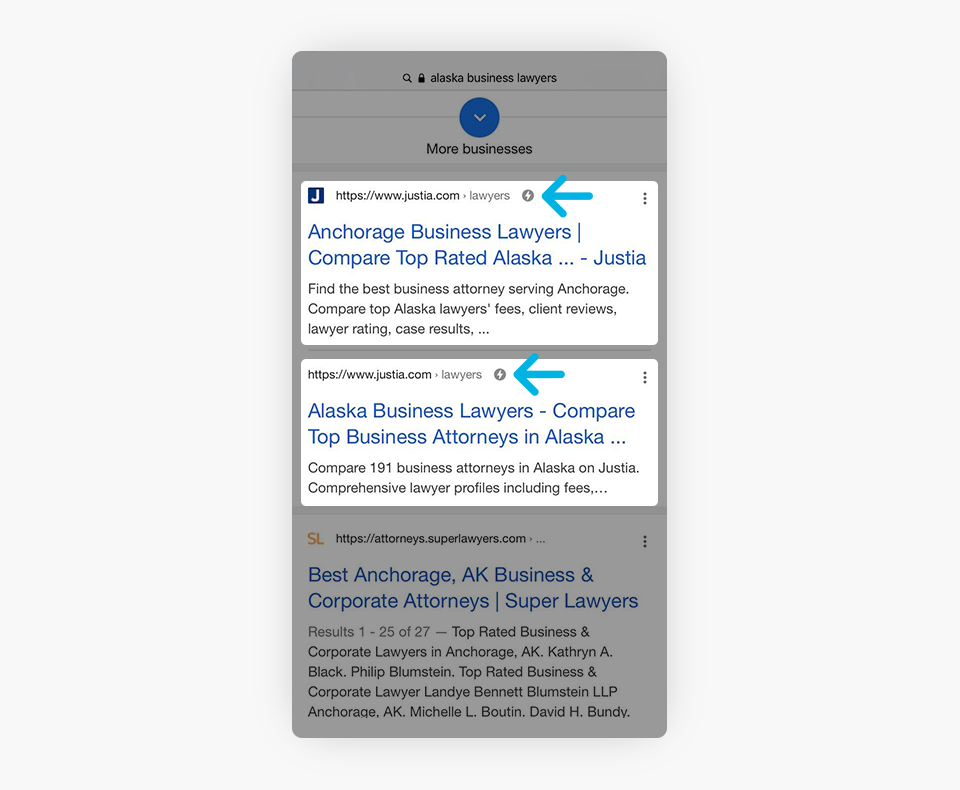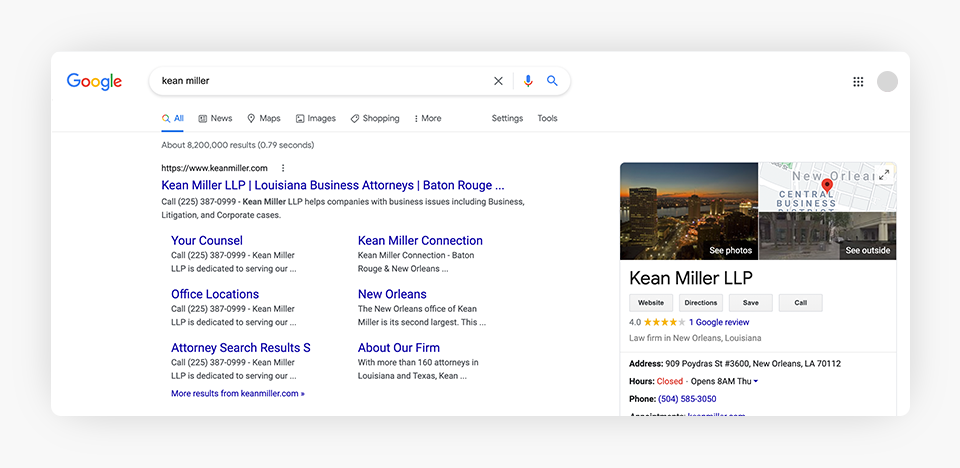We can’t send you updates from Justia Onward without your email.
Unsubscribe at any time.
Have you ever wondered whether you should allow a guest to post on your blog? Do you worry whether your Title Tags are too long for SEO value? Should you do press releases as a means to generate links? This post has 5 answers to some common questions we receive from lawyers like you.
Welcome to the first edition of Justia Q&A, where we help lawyers like you stay ahead of the digital marketing curve. Keep reading this post to see five of the most common questions we receive about SEO and discover the answers that we want all lawyers to know.
1. Should I accept offers to write guest posts for my legal blog?

Generally, the answer to this is no. The exception is if you know the person writing the post, the content is high quality and unique, and it is not part of an SEO linking scheme.
If you have a professional or personal relationship with the blogger and know they intend to contribute high-quality original content to your blog, then you can exercise your professional judgment in determining whether you want to accept their post. Never post low-quality or duplicate content from guest bloggers (or from yourself).
However, many legal bloggers are frequently solicited by strangers with whom they have no personal relationship that want to write a blog post. These unsolicited offers are often from individuals who are just trying to build links. This type of link-building practice is frowned upon by Google, and Google has stated that these guest post links should include a rel=nofollow attribute. In fact, even for those guest bloggers whom you know, you might want to include a rel=nofollow or rel=ugc attribute just to be safe.
2. Is publishing press releases good for my SEO?

In short, sometimes. Press releases can help with SEO, especially if they are read by others and result in someone publishing an original article about the law firm with links back to the law firm’s website or blog.
Links in the press releases themselves can provide some value, although this value is often only temporary because most press releases are removed from news websites after 30-90 days. While there are archives for press releases that will preserve them into the future, the majority of these permanent press release archives are considered low-quality websites by Google.
Furthermore, Google has said its algorithm generally ignores most links within press releases themselves, so you are hoping that your press release is used for an original article if you want a longer-term impact.
That said, use press releases for new and interesting news about your firm, rather than as a part of your SEO strategy. Your SEO efforts are generally better served by focusing on publishing high-quality, original information to your website pages and blog.
3. What on earth is AMP?

AMP stands for Accelerated Mobile Pages. At its core, AMP is a fast-loading version of the content on a website. Many websites have both html and AMP versions of their content pages with meta tags in the html versions to let Google (and other search engines, such as Bing) know that there is an associated AMP version. The AMP version of the pages will be copied by Google to their Content Delivery Network (CDN) servers.
While Google has said that content will not rank better on Google just because there is an AMP page itself, the benefits Google gives to AMP pages over html and xhtml lead to better Google search rankings. In particular, these benefits include:
1. Speed: AMP is lightweight and fast on mobile devices.
2. Google CDN & Preloaded in Mobile Browser: As mentioned above, AMP pages are loaded onto Google’s CDN servers. When a mobile user is looking at a search engine results page (SERP), Google begins loading AMP pages onto the device even before they are visited. This makes the pages appear instantaneous when a user clicks on a Google CDN hosted AMP page.
3. Lightning Bolt: AMP pages on Google’s CDN receive the lightning bolt icon, which attracts attention and, thus, can increase clicks to your website. However, Google announced that the lightning bolt badge will be retired in conjunction with the planned page experience update, which is expected to rollout in mid-June 2021.
Thus, it is not that the webpage is AMP in and of itself that makes it rank better. You could easily have an html page that is very light and loads just as fast. But Google gives two benefits to AMP pages that it does not give to html pages: 1) it loads AMP pages on the Google CDN servers (which then allows Google to preload the content of those pages before a mobile user actually clicks to visit the page), and 2) it adds the lightning bolt icon to attract additional attention (at least for now).
Watch this clip to gain insights into AMP.
For more information on what AMP is and how it helps you, check out this resource from Google and this previous Justia Onward blog post.
4. Is my title tag too long? What does Google recommend?

Almost always, the answer to this question is no. We should first note, that Google has no formal recommendation. That said, we frequently hear from lawyers who have been told by a consultant, or automated software, that their title tags are too long. This is basically because Google only shows 50-70 characters for the title of a webpage in the search snippets on the SERP.
While you don’t want to have a title tag that is 200 characters long, going over a bit is fine too. We normally shoot for a maximum of 85 characters before trying to rewrite the title tag. That said, there can be benefits to having longer title tags. Google representatives have even confirmed that long title tags – including those that are longer than what can be displayed – have SEO benefits.
Longer tags can help Google better understand what the page is about and better serve it in the search results for relevant queries. Google might rewrite the long title and display something different in the search results, but Google might also rewrite a title even if it is short. For example, when you search for a law firm name, Google will often rewrite the title for the website homepage to be the law firm name.
5. How do I get sitelinks to appear on the Search Engine Results Page (SERP)?

You have probably seen a sitelink in your Google search results at some point. These are the little subheadings, or smaller links, that appear below the main search result. These links connect to specific pages within the website, rather than the homepage.
The intent behind sitelinks is to assist searchers in quickly locating the information they seek. To get your sitelinks on the SERP, the best thing you can do is set up your website structure so that it is easy for Google’s bots to crawl the page and identify the appropriate sitelinks. Having breadcrumbs for internal pages, with structured data markup, makes it easier for Google to determine where a page falls within the hierarchy of the site and seems to increase the likelihood of sitelinks displaying for an internal page within the site.
According to Google, sitelinks is currently an automated process. “If the structure of your site doesn’t allow [Google’s] algorithm to find good sitelinks, or [Google doesn’t] think the sitelinks are relevant to the user’s query, [Google] won’t show them.” Therefore, we recommend having a good site structure, breadcrumbs with structured markup, and high-quality, original content to increase the likelihood that sitelinks are displayed for your website in response to certain queries and to improve your overall SEO.
Final Thoughts: Why Should You Care?
In order to grow your firm and find the clients looking for a lawyer like you, you need to build your basic SEO and search knowledge and then implement SEO best practices and strategies as part of your larger digital marketing plan. However, you do not have to do this alone.
Our team at Justia is well-versed in technology and SEO. Our focus is on solutions designed specifically for the legal industry, and we are prepared to empower you with solutions to reach your goals. Contact us now to learn more.